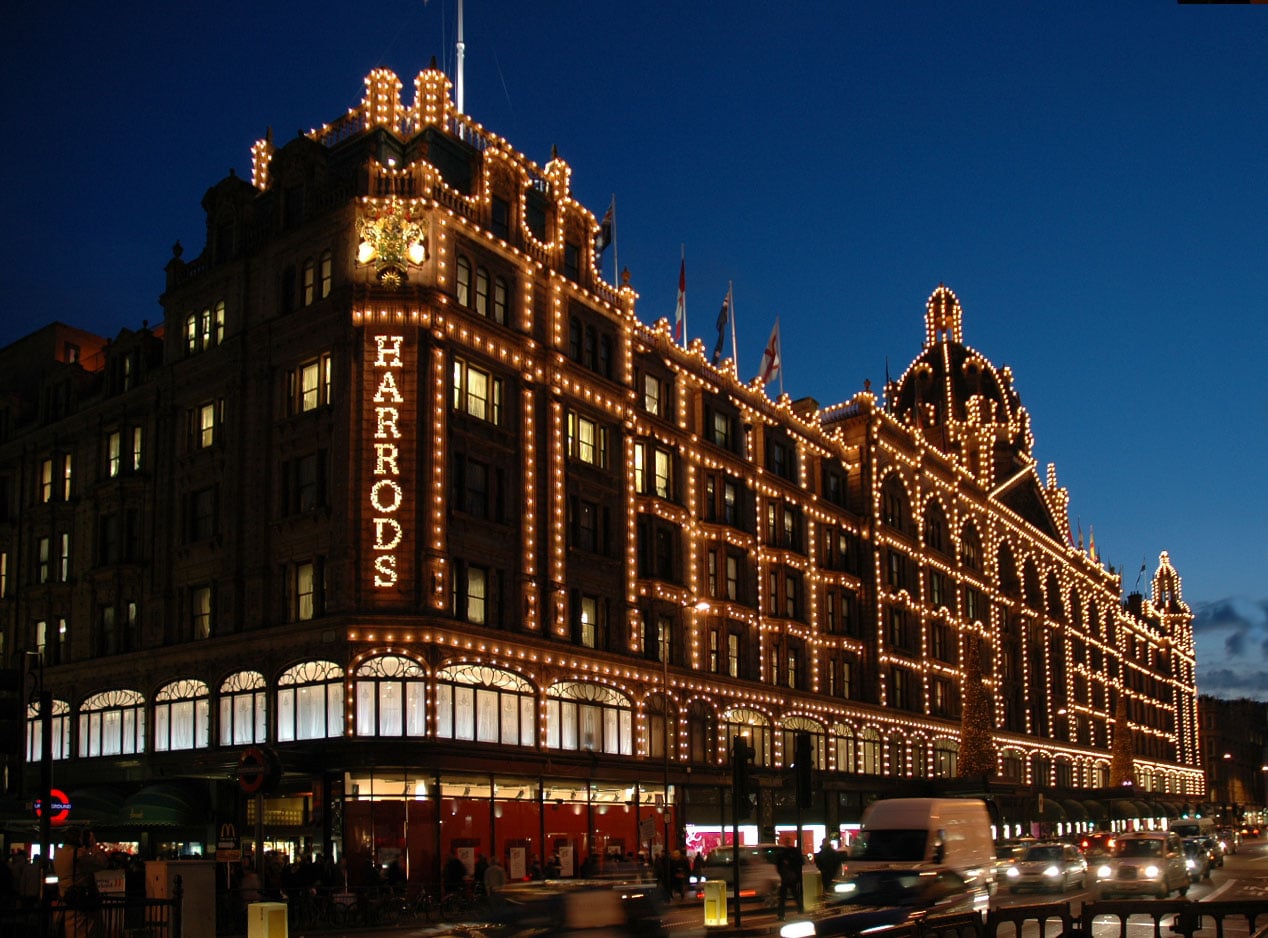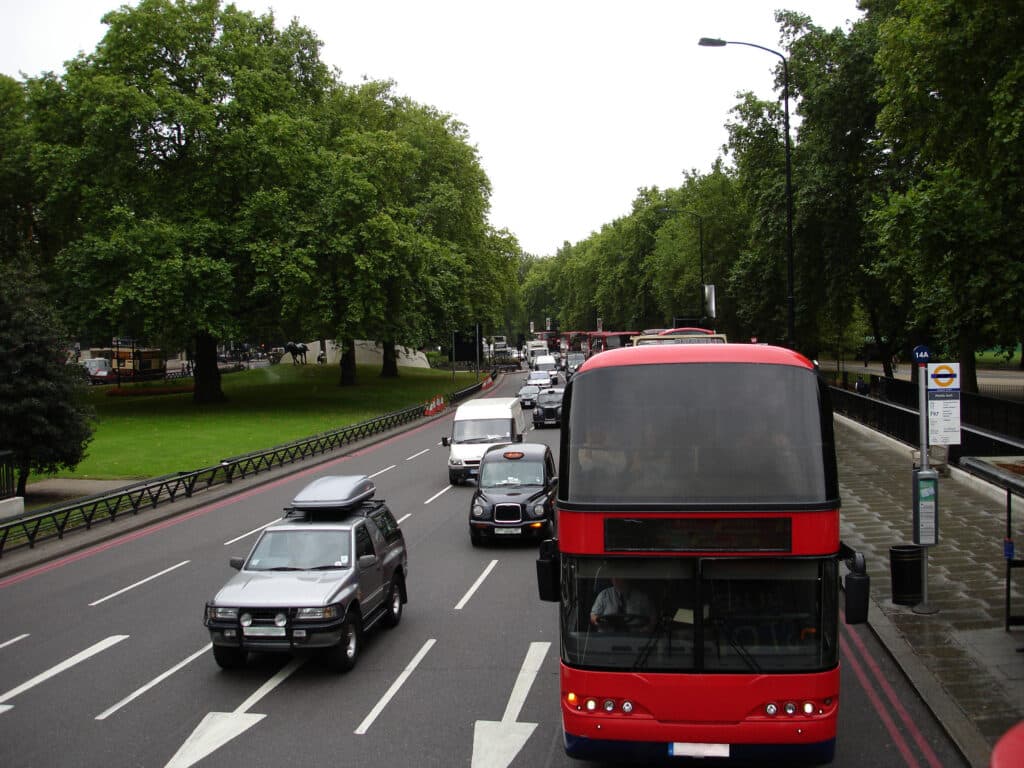It’s probably the most famous store in the world, with its gargantuan building and iconic green and gold bags, but how much do you really know about Harrods?
England’s first escalator
Imagine you’ve never seen an escalator, or ‘moving staircase’, before. One Wednesday in November 1898, you walk into Harrods and come face to face with Piat’s installation, the first moving staircase in England. You’d probably need a stiff drink after taking a ride, which is why Harrods staff were waiting at the top to offer brandy and smelling salts to traumatised customers after the ordeal.
Winnie the Pooh
A.A. Milne’s fictional bear Winnie the Pooh was a London invention. And although Winnie was named after a bear at London Zoo, Milne’s inspiration for the stories came from seeing his son Christopher Robin playing with a teddy bear bought in Harrods in 1921.
Tiara Triangle
The three mile square area of Kensington and Knightsbridge which surrounds the store is known as the Tiara Triangle. It’s rumoured that 60% of Harrods customers live within this well-to-do Tiara Triangle.
Dress code
Not surprisingly for a store with such well-heeled customers, Harrods introduced a dress code policy in 1989, and it still applies today, although it’s referred to as Visitor Guidelines:
Refrain from wearing clothing which may reveal intimate parts of the body, or which portrays offensive pictures or writing.
Refrain from wearing crash helmets in the store.
Carry small rucksacks in your hand or on your front rather than on your back or shoulder.
They may be ‘guidelines’ rather than rules, but that doesn’t mean you can flout them willy-nilly. People who have fallen foul of the dress code in the past include a Scout group from Hampshire, a woman with a Mohican and a soldier on Remembrance Sunday.
High-tech customers have their own Visitor Guideline:
For security reasons, we may politely ask customers wearing Google Glasses to remove them while in areas where we do not allow photography.
Harrodsville
Harrods is known as far away as New Zealand — although that’s not necessarily a good thing. In 1986, Harrods’ owner Mohammed Al Fayed launched a legal campaign against Henry Harrod, a restaurant owner in the New Zealand town of Otorohanga who wanted to name his restaurant Harrods.
In response, every business in the town changed its name to Harrods, and the District Council temporarily changed the town’s name to Harrordsville. Media coverage ensued, and Al Fayed dropped the lawsuit.
Harrods of Manchester
Harrods’ name has caused problems in England, too. In an attempt to open a chain of provincial stores, Harrods bought Manchester’s Kendal Milne & Co. department store in 1919. It was briefly renamed Harrods, but was changed back to its original name due to staff and customers protests. It was sold to House of Fraser in 1959.
The name in lights
Looks good, doesn’t it? Between 11,000-12,000 light bulbs are used to create this effect with a rumoured 300 needing to be replaced every day.
The lights were turned off as a mark of respect when Dodi Fayed and Princess Diana died in a car crash in 1997. Dodi Fayed was the son of Mohamed Al-Fayed, who owned the store at the time. A memorial to the pair was erected in the store, in the form of a bronze statue which depicts them dancing. It’s got a three-star rating on Trip Advisor.
Silver replica
There’s a sliver replica of Harrods (not full sized unfortunately). It was a gift from Harry Gordon Selfridge (of Selfridges fame) after he lost a bet with the managing director of Harrods as to which store would make the bigger profit in 1927. It used to be on display in Harrods, but sadly isn’t any longer.
Slithery security team
Shoes are a big deal, and no more so than at Harrods. In 2007, a pair of ruby and diamond encrusted sandals went on display, with a price tag of £62,000 — and a live cobra guarding them.
No word yet on who purchased the shoes — or whether they’re still in a stockroom somewhere, wrapped in a snake skeleton and rapidly gathering dust.
Animal department
Snakes aren’t the only animal in Harrods history — Harrods Pet Store was well-known for selling exotic animals to wealthy customers until it closed in 2014.
Christian the Lion was bought from the store in 1969, playwright Noel Coward purchased himself an alligator as a Christmas gift and Ronald Reagan acquired himself an elephant called Gertie in a telephone sale. We’ll stick to socks, thanks.
The Great Exhibition
Harrods’ famous Knightsbridge location is largely thanks to the Great Exhibition of 1851 in Hyde Park.
Charles Henry Harrod ran a draper and haberdashery business in Borough High Street 1824-1831. In 1832 he established a grocery business at Upper Whitecross Street in Clerkenwell. However, in 1849, he took over a shop on the site of the current Harrods, as he wanted to capitalise on trade provided by the 1851 Great Exhibition in nearby Hyde Park.
It expanded into adjoining stores, and the rest, as they say, is history.
source: londonist.com
Can you fill in the gaps in the text based on the information you’ve learnt about Harrods?
Harrods is probably the most (1)……. store in the world. Its iconic bags are (2) …… and (3) …… . The first (4) …… in England was installed in Harrods. Harrods’ customers are usually (5) …… . The store introduced a (6) …… policy in 1989. There are between 11,000-12,000 (7) …… in the store’s name in lights. There is a (8) ……. to Dodi Fayed and Princess Diana which (9) …… them dancing. Harrods Pet Store used to sell (10) …… animals to wealthy customers. Ronald Reagan bought an (11) …… from Harrods.
Key
1. famous
2. green
3. gold
4. escalator
5. well-to-do/well-heeled/wealthy
6. dress code
7. light bulbs
8. memorial
9. depicts
10. exotic
11. elephant
Vocabulary
gargantuan | óriási, rettentő nagy |
escalator | mozgólépcső |
installation | berendezés, szerkezet |
stiff drink | erős ital |
smelling salts | repülősó |
ordeal | megpróbáltatás |
triangle | háromszög |
well-to-do | gazdag, jómódú |
well-heeled | jómódú |
to refrain from sg | tartózkodni valamitől |
to reveal | felfedni |
offensive | sértő |
crash helmet | bukósisak |
rucksack | hátizsák |
to flout | fittyet hány, figyelmen kívül hagy |
willy-nilly | akaratlanul, tudatlanságból |
to fall foul of | áthág, megsért |
temporarily | ideiglenesen |
to ensue | következik, követ |
provincial | vidéki |
protest | tiltakozás |
light bulb | villanykörte |
respect | tisztelet |
memorial | emlékmű |
to erect | emelni |
to depict | ábrázolni |
bet | fogadás |
slithery | csúszós, csúszó |
ruby | rubin |
diamond | gyémánt |
encrusted | berakásos |
stockroom | raktár |
skeleton | csontváz |
dust | por |
wealthy | jómódú, gazdag |
playwright | drámaíró |
to stick to sg | ragaszkodni valamihez, megmaradni valaminél |
draper | méteráru bolt |
haberdashery | rövidáru bolt |
to capitalise | kihasználni |
to expand | terjeszkedni |
The rest is history. | És a többi már jól ismert. |







